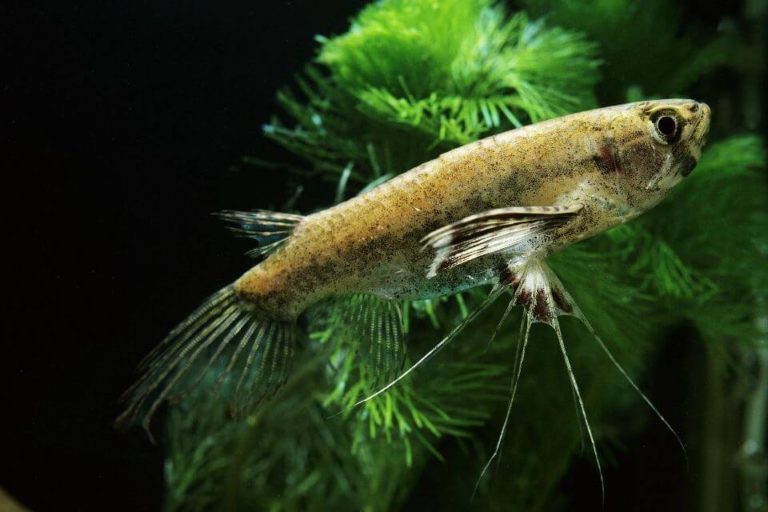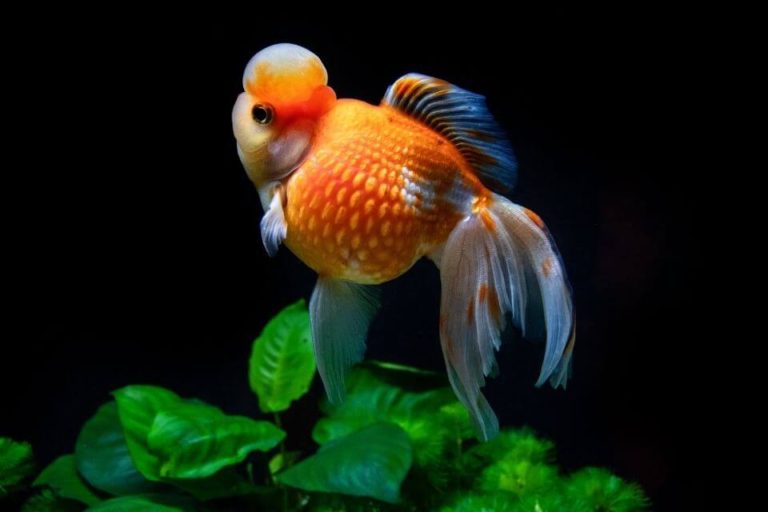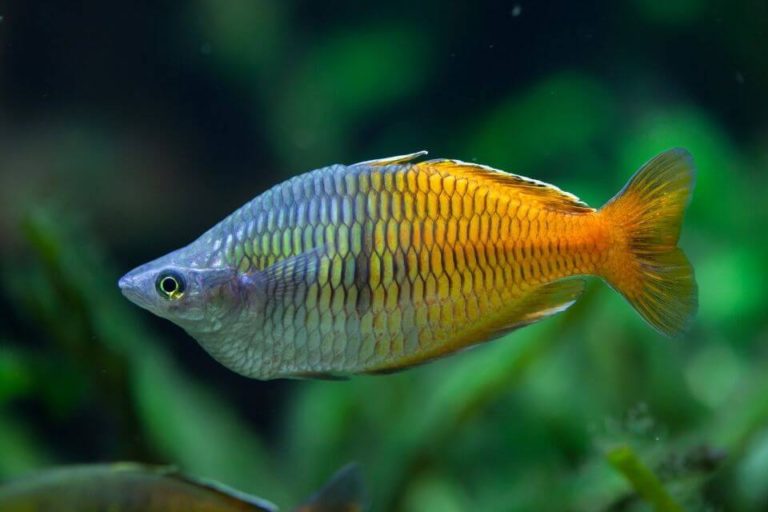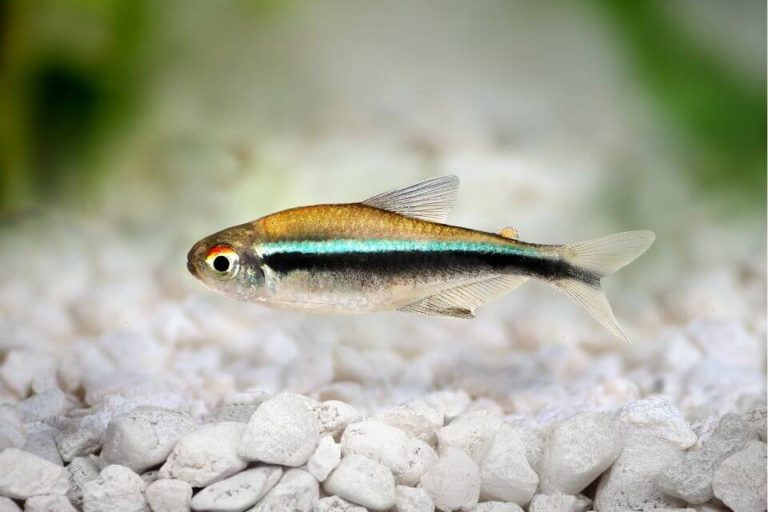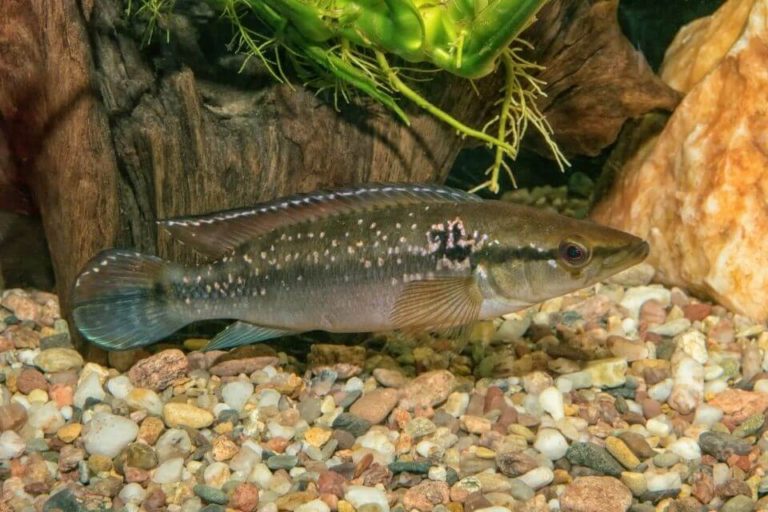Redtail Catfish Species Profile and Care Guide – Tank Size and Tankmates

Due to its massive size and recognizable catfish features, the Redtail Catfish is sold in the aquarium market worldwide. But most tank fish keepers do not know that it can be hard to keep a fish of this size.
If you are considering adding a Redtail Catfish to your aquarium, make sure you understand what this fish needs to survive first.
The below information will help you come to an informed decision about your ability to care for a fish such as the Redtail Catfish. Keep reading to learn more about the Redtail’s temperament, dietary needs, and suitable tank conditions for keeping this beautiful fish.
| Quick Facts: | |
|---|---|
| Common Names : | Redtail Catfish, Cajaro, Pirarara |
| Origin : | Rivers of South America |
| Family : | Pimelodidae |
| Scientific Name : | Phractocephalus hemioliopterus |
| Care Level : | Difficult |
| Temperament : | Very aggressive |
| Social : | Not compatible |
| Diet : | Omnivores |
| Size (average) : | Up to 4.5 feet |
| Lifespan : | Up to 15 years |
| Breeding : | Egg layer |
| Minimum Tank Size: | 1500 gallons |
| Tank Environment : | Freshwater , Sandy substrate |
| Temperature : | 68°F – 80°F (20 – 22 °C) |
| Water Hardness : | 3 - 12 dKH |
| Water pH Level : | 6.0 - 7.5 |
Species Overview
A very special species of Catfish, the Redtail Catfish is the last living member of the Phractocephalus genus. That is not the only reason this fish is so special, however; they are born at just 2 inches (5 cm) long but quickly grow into some of the biggest freshwater fish ever sold in fish and aquarium markets.
If proper care conditions are met, the Redtail Catfish can live a very long time and can make for a rich and diverse addition to any aquarium. Unfortunately, many fishkeepers don’t realize just how big these fish will grow.
When Catfish outgrow the aquarium, owners try to donate the fish to local aquariums. But this is happening at such an alarming rate that aquariums are running out of space to house these large and temperamental fish.
Please consider whether you can provide long-term care for a Redtail Catfish before you purchase one for yourself!
Typical Behavior & Temperament
The Redtail Catfish has a very unique temperament and behavior, which may make it difficult to find suitable tank mates. They are incredibly aggressive fish since they are natural predators in the wild. They will often seek out, attack, and eat fish that are smaller than them, especially fish that are half the Redtail’s size.
Redtail Catfish are strangely shy when they are young, and they will look for plenty of places to hide. As they grow older, they start to develop more aggressive traits.
They are active swimmers, meaning they will need a lot of room to stretch their fins and search for food among the substrate. They will put just about anything they can fit into their mouths, including other fish, rocks, gravel, and plants.
Origin and Distribution
Redtail Catfish originate from the rivers of South America, particularly the Amazonian rivers. In the wild, you can find Redtail Catfish in Peru, Venezuela, Brazil, and neighboring areas.
These fish have become quite popular among freshwater fish keepers, but are often abandoned due to their rapidly growing size. You may have easy access to this fish no matter where you are in the world, but you must consider whether you are capable of keeping one before making a purchase.
Average Size
The Redtail Catfish grows to be a lot longer than most fish owners expect. When fully grown, this fish can reach between 4 to 6 feet. Sellers may try to convince you that they cannot grow longer than one foot in captivity, but this is simply not true. You’re going to have to account for a lot more space than that.
How Big Does a Redtail Catfish Get?
When they are first born, Redtail Catfish are just a few inches long. They then grow very rapidly. Once they grow into adulthood, they could grow up to 6 feet in length. This is much larger than most aquarists expect.
Lifespan
Redtail Catfish are incredibly hardy and strong. They are naturally resistant to a lot of diseases and as predators they can handle a diverse diet. Because of this, they have some of the longest lifespans in the freshwater fish world. They can live up to 15 years with proper care!
Appearance, Colors, and Special Markings

Redtail Catfish are beautiful fish to watch, as their many colors and markings make them a unique sight to see. One of the most noticeable features of this Catfish is the whiskers, which are a signature look for this species.
Along with their bodies, they sport dark grey and brown colors on the top. Dark spots are scattered across the rest of the body with a curvy white band crawling down each side.
The long red tail, which the fish is named for, is a beautiful feature on the back of the fish. The red-orange color of both the tail and the fins makes this fish highly sought after by aquarists and fish enthusiasts around the world.
Redtail Catfish Aquarium Care
Since these Catfish species can grow incredibly large, you must provide them with plenty of space in your tank. Unfortunately, the biggest concern about keeping these as pets is that there will not be adequate space in the aquarium for them to fully thrive.
You need an extra-huge tank to accommodate a Redtail Catfish. Keep in mind all of these important tank specifications and water parameters to make sure that you can fully care for this fish.
– Redtail Catfish Tank Size
The acceptable Redtail Catfish tank size would be at least 1500 gallons for an adult fish. How every this fish species is impossible to keep in a home fish tank. It required a commercial-type aquarium to house this giant catfish species.
Instead, it might be better to build an indoor pond or an in-ground lake to provide enough room for this fish. Keep in mind that Redtails also create a lot of waste, which can make it difficult to maintain clean water conditions.
– Water Parameters
Depending on the type of housing structure you set up for your Redtail Catfish, you may have to use different methods to maintain the perfect water parameters. Though they are hardy, these Catfish still rely on waters that are somewhat regular in temperature and condition.
- Water Temperature: 68°F – 80°F at all times.
- Acidity: 6.0 -7.5 pH
- Water Hardness: 3 – 12 dKH
– Redtail Catfish Aquarium Setup
You may have to invest in a special kind of water filter that works well with ponds and built-in pools. It is harder to maintain the right temperature and hardness in a tank with over 1000 gallons of water, as opposed to a small 50 gallons tank.
Make sure you know what equipment is needed to maintain the water before introducing your Catfish to its new home.
If there is one thing to know about the Redtail Catfish, it is that this fish loves to eat! They will put their mouths on just about anything, so it might not be a good idea to fill the tank with decorations and substrate. If they don’t end up eating it, they will still tear it apart and destroy it.
For this reason, we recommend a fine sand bottom or even a substrate-free tank.
Standard lighting will work just fine for these fish, as they are used to swimming in murky waters. If you are keen on adding decorations, you may just need a cave or two so your adolescent Redtail has a place to hide. Otherwise, they won’t be interested in hiding spots.
– Suitable Plants
It can be difficult to find suitable plants to go into your Redtail Catfish habitat. Since they are likely to destroy any plants they can dig up, you might want to steer clear of adding too much greenery to the aquarium. While this may not look aesthetically pleasing, it will be better for the health of the fish.
It is possible to add some floating aquarium plant matter for them to eat during their meals, which will be discussed later in this guide.
Common Possible Diseases
You may not have to worry about your fish getting sick most of the time. But while Redtail Catfish are some of the hardier freshwater fish, they are still not invincible. There are a few possible diseases and illnesses you should know about.
– Ammonia Poisoning
Ammonia is extremely poisonous to fish. If the waters become tainted with even the smallest concentration of ammonia in a tank. This can damage the gills, making it difficult for the fish to breathe.
Symptoms include red steaks and burns on the body, torn fins, and lethargy. Returning the water to near 0 levels of ammonia will help cure the fish.
– Fin Rot
A common bacterial infection, fin rot hurts freshwater fish and the Redtail is no exception. This occurs when there are too many bacteria in the water, which eats away at the fins and other external parts of the body. You can add antibacterial medications to the water to help reduce symptoms and treat your fish.
Diet and Feeding
The Redtail Catfish is a creature that loves to eat. You can feed it just about anything; however, some substances are healthier than others. It is important to know what the Redtail might eat in the wild in order to come up with a balanced meal for them. They will need a lot of protein and nutrients to stay strong and healthy.
Be sure to give them plenty of live food options such as:
- Worms
- Shrimp
- Small fish
- Meat chunks
You also want to supplement their diet with flakes and pre-frozen substances like:
- Pellets
- Plant matter
- Dried worms
The food should be able to sink, as Catfish spend most of the time closer to the bottom of the tank. They shouldn’t take more than a few minutes to eat up all of their food.

Tank Mates
Finding appropriate tank mates for the Redtail Catfish can be the biggest challenge of keeping a creature like this. Since Redtails are so incredibly massive, and predatory, they tend to show aggression towards any fish that is smaller than them.
And since most freshwater fish are smaller, it can be hard to figure out how to give these fish some decent neighbors.
What Fish Can You Put with a Redtail Catfish?
Acceptable tank mates are fish that are around the same size and also non-aggressive. It is best to introduce the fish to each other at an early age.
Compatible tankmates may include:
- Gars
- Datnoids
- Giant Gourami
- Iridescent Shark
- Armored Catfish
You will want to make sure that there is enough room in your tank for multiple fish before you add more to the aquarium.
How Do You Tell if a Redtail Catfish is Male or Female?
Fishkeepers who are hoping to breed Redtail Catfish may not have a lot of luck. There is a very low chance of these fish breeding at home aquariums or impossible to do it. If they do breed, it might be a fairly hands-off experience for you.
There are almost no distinguishing features between male and female Redtail Catfish. It would take an expert to breed them, and even experts have had no luck properly sexing the fish with just visual features.
Breeding the Redtail Catfish
Redtail Catfish are oviparous, which means they will lay eggs that are then fertilized by the male, and then they hatch over time. There must be perfect water conditions and a warm temperature for breeding to be successful.
Once the eggs are laid, one parent will protect them for a week. Afterward, the fry will leave in its own direction.
Again, it can be very hard to determine the gender of the fish, which makes breeding them nearly impossible. Speak with an expert before attempting to breed these fish on your own.
Are Redtail Catfish Aggressive?
Redtail Catfish are extremely aggressive. It can be very difficult to find proper tank mates for this fish species as they will attack anything that moves. In fact, Redtail Catfish are known to eat smaller aquarium fish and even destroy plants that may be growing in the tank.
Can a Redtail Catfish Live in a 55-Gallon Tank?
Under no circumstances can a Redtail Catfish live in a tank as small as 55 gallons. These are giant freshwater fish that are highly active, meaning they need a lot of space to swim around in. The minimum tank size for a Redtail Catfish should be 1500 gallons.
How Much is a Redtail Catfish Worth?
Depending on the fish retailer or breeder you purchase the Redtail Catfish from, you could be spending anywhere from $30 to $100. Again, it is important that you consider whether you are fully prepared for this kind of fish before investing in one for yourself.
Are Redtail Catfish Good to Eat?
In some parts of the world, Redtail Catfish are a common food item. However, it is not recommended that you eat fish that are bred and sold for aquarium purposes. Traditionally there are other species of Catfish that are used for food and cooking.
Where Do You Catch Redtail Catfish?
Redtail Catfish can be found in many spots around the world, but the most common sources for fishing include the Amazonian rivers of Brazil and Peru. You may not have to fish for one in the wild, though, because many aquarium sources sell them for decent prices.
Are Redtail Catfish Dangerous to Humans?
Redtail Catfish are not dangerous to humans. While they can bite, they do not often nip at the hands of people. They will go after smaller fish and plants, however.

Can Redtail Catfish Live in Cold Water?
This species of Catfish will not thrive in colder waters. Their eggs require high temperatures in order to hatch. These fish are used to living in tropical conditions, meaning they will always require a degree of warmth in their waters.
Are Redtail Catfish Invasive?
While not inherently invasive in the wild, Redtail Catfish can become invasive if they are introduced to waters they are not native to. As large predators, they can destroy ecosystems and habitats by eating everything in sight.
Can You Keep a Redtail Catfish in a Pond?
There are not many glass aquariums that are built to be big enough to properly house a Redtail Catfish. For that reason, it is recommended that you build an indoor pond or pool that is big enough for a fish of this size.
In fact, Redtails will thrive better in pond-like conditions as they are more suited to waters that resemble a natural habitat. Just be sure that the pond is larger than 1500 gallons in size!
Final Thoughts
Redtail Catfish are uniquely large and aggressive fish, which is why so many people around the world want them for their own aquariums. This species of Catfish can grow to be 6 feet long, so it is critical that they have at least 1500 to 2000 gallons of water to live in.
The size and dietary needs of the Redtail Catfish can make it a difficult fish to own. Make sure you are fully equipped for this aggressive giant before you consider purchasing one.



